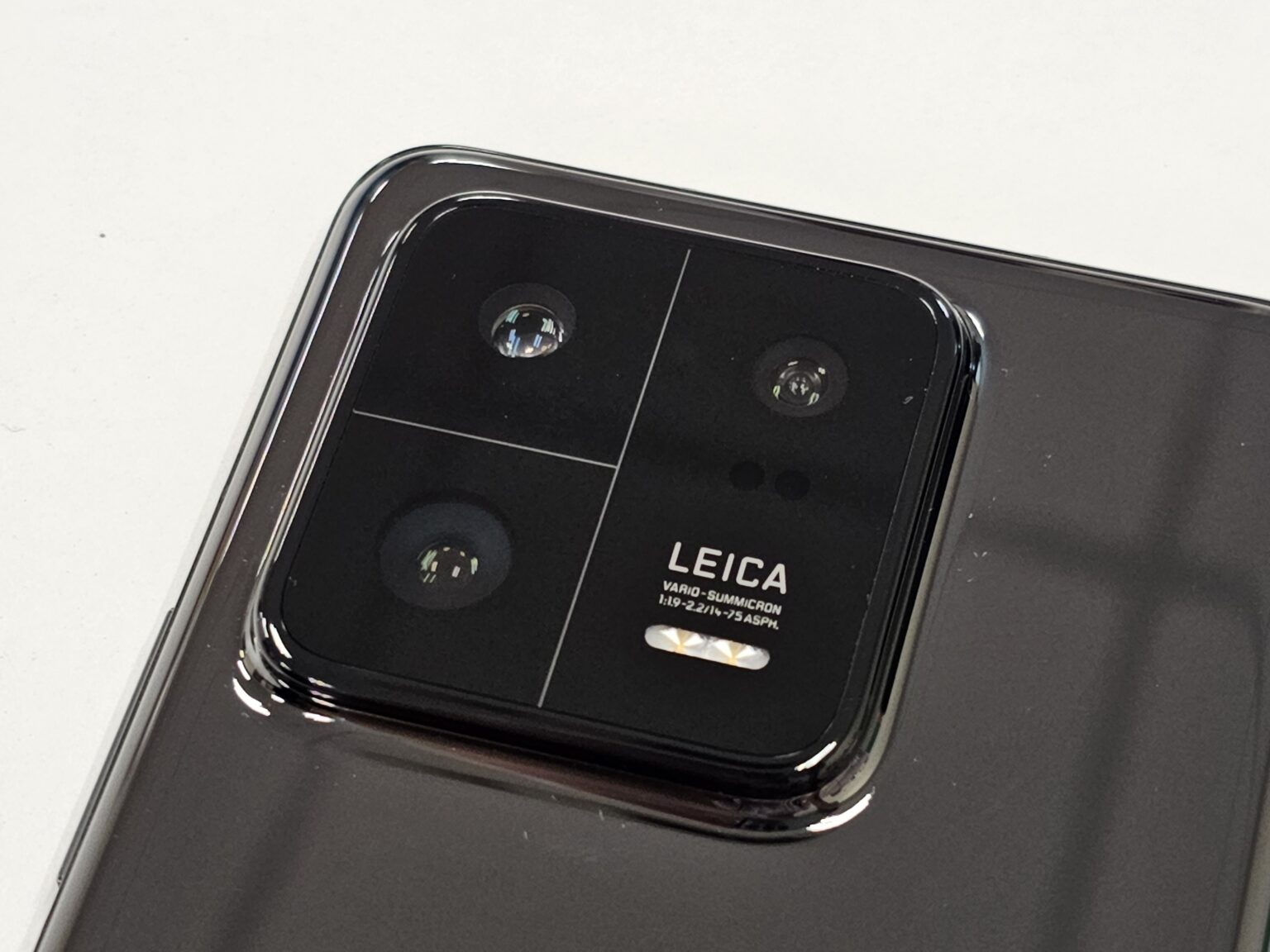If you are looking for take some of the best pictures on a smartphone today, the Xiaomi 13 Pro would be something you’d want to check out.
The Chinese phone maker has gone all out with its latest flagship phone when it comes to imaging, and it impresses from the spec sheet to the actual photos we took.
First, the hardware. The Xiaomi 13 Pro sports Leica lenses and imaging profiles, a much-desired Sony 1-inch image sensor for the main camera and improved 50-megapixel ultrawide & 3.2x magnification telephoto cameras.
The device is now out in Singapore with a sticker price of S$1,599 for the variant with 12GB RAM and 256GB storage. Opting for 512GB of storage will cost you S$100 more.
Design
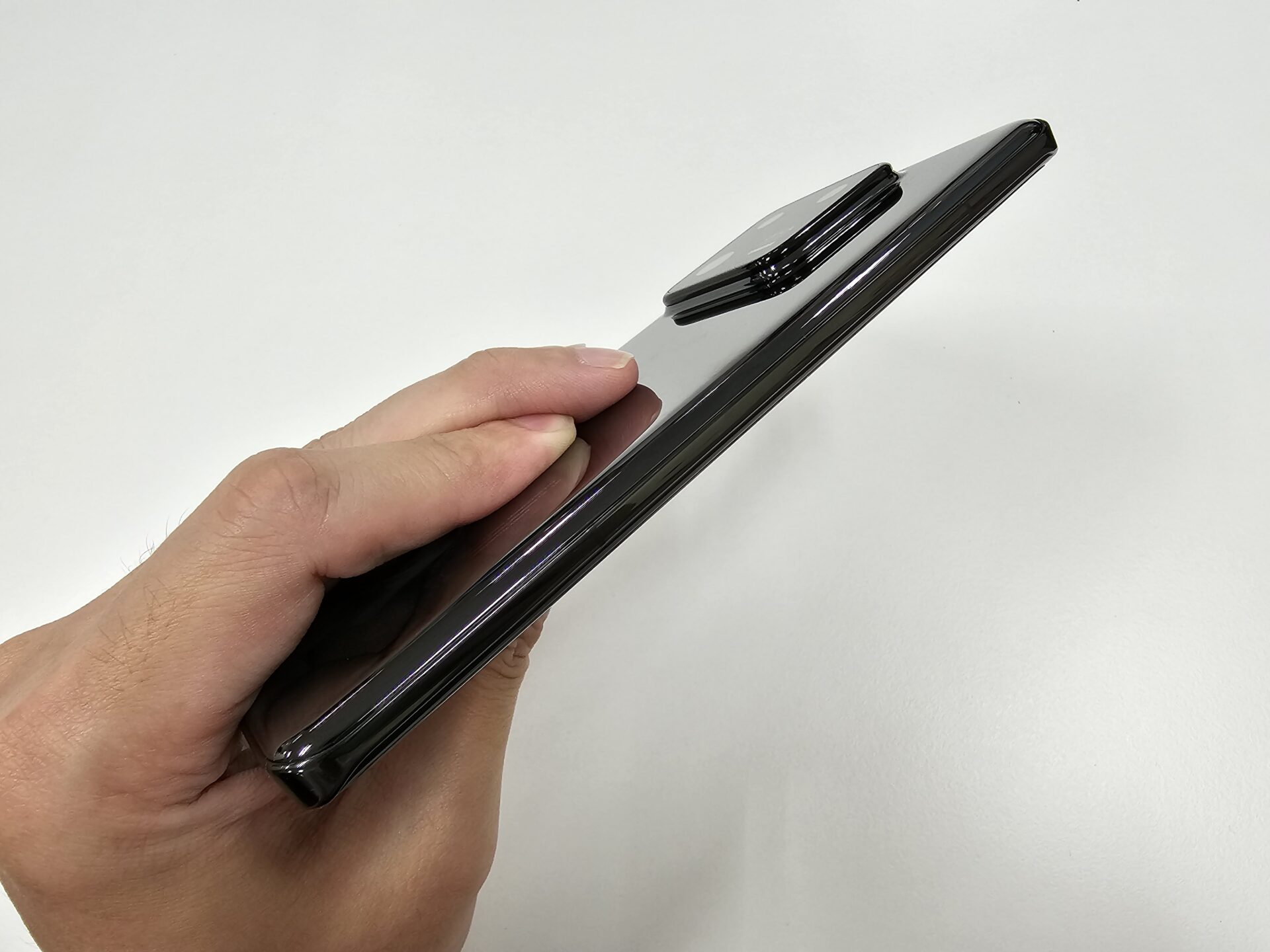
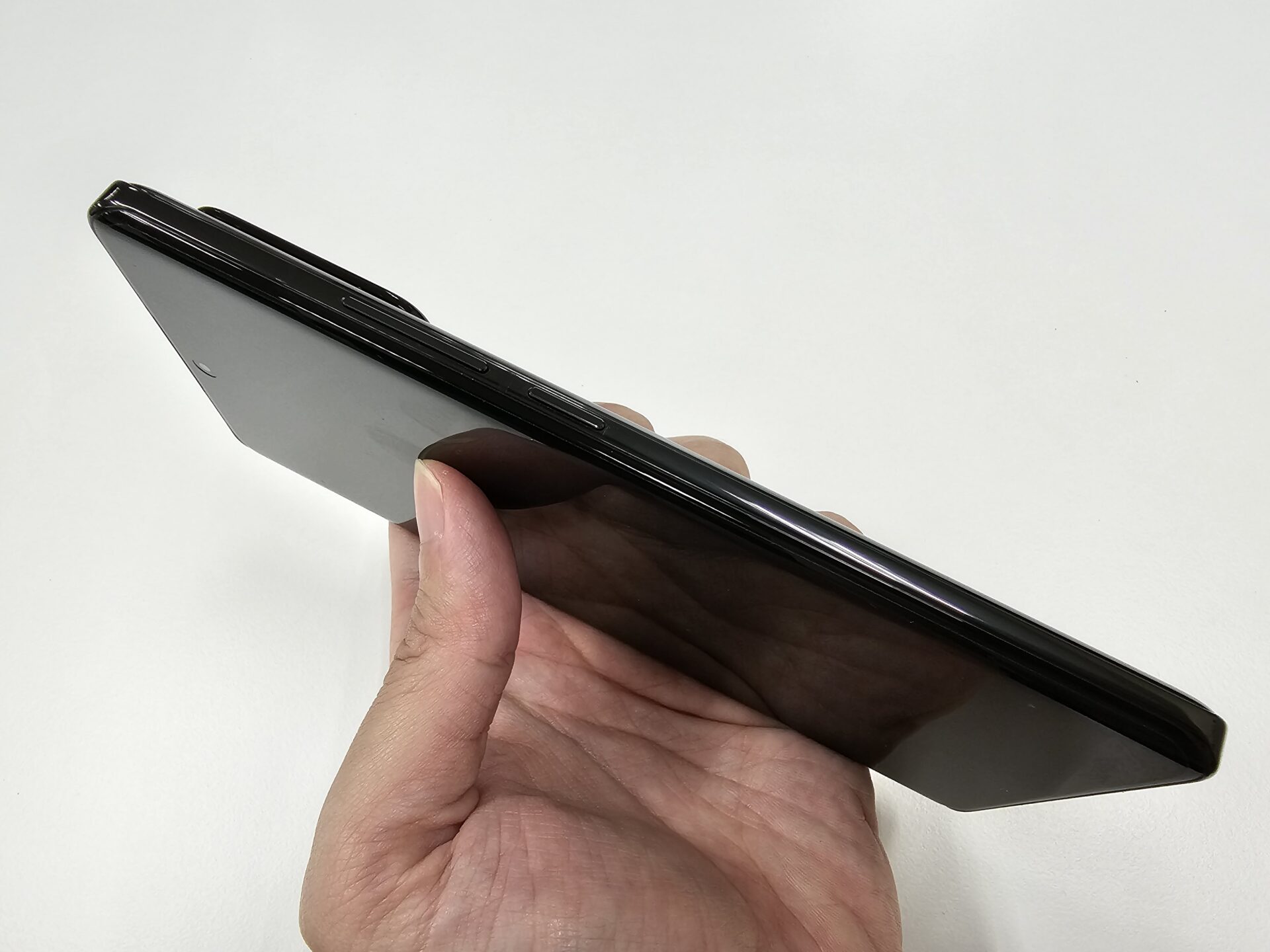
The Xiaomi 13 Pro’s size and weight are classic modern phablet. It measures 162.9 x 74.6 x 8.4mm and weighs 229g. The Samsung Galaxy S23 Ultra, in comparison, is just 5 grams heavier, and 4mm wider, owing to its 19.3:9 aspect ratio.
You will not really mistake the Xiaomi 13 Pro for another device, though, as Xiaomi is rather generous with its curves.
The four corners of the screen are rounded to coincide with the waterfall design along the two long sides of the display, which slope towards the middle bezel of the device.
The rear is also unmistakable, with the Xiaomi logo on the bottom left, regulatory messaging on the bottom right, a rectangular camera block holding the three cameras (and their substantial sensors), and Leica’s logo next to the flash. The edges on the back also curve towards the bezel, as at the front.
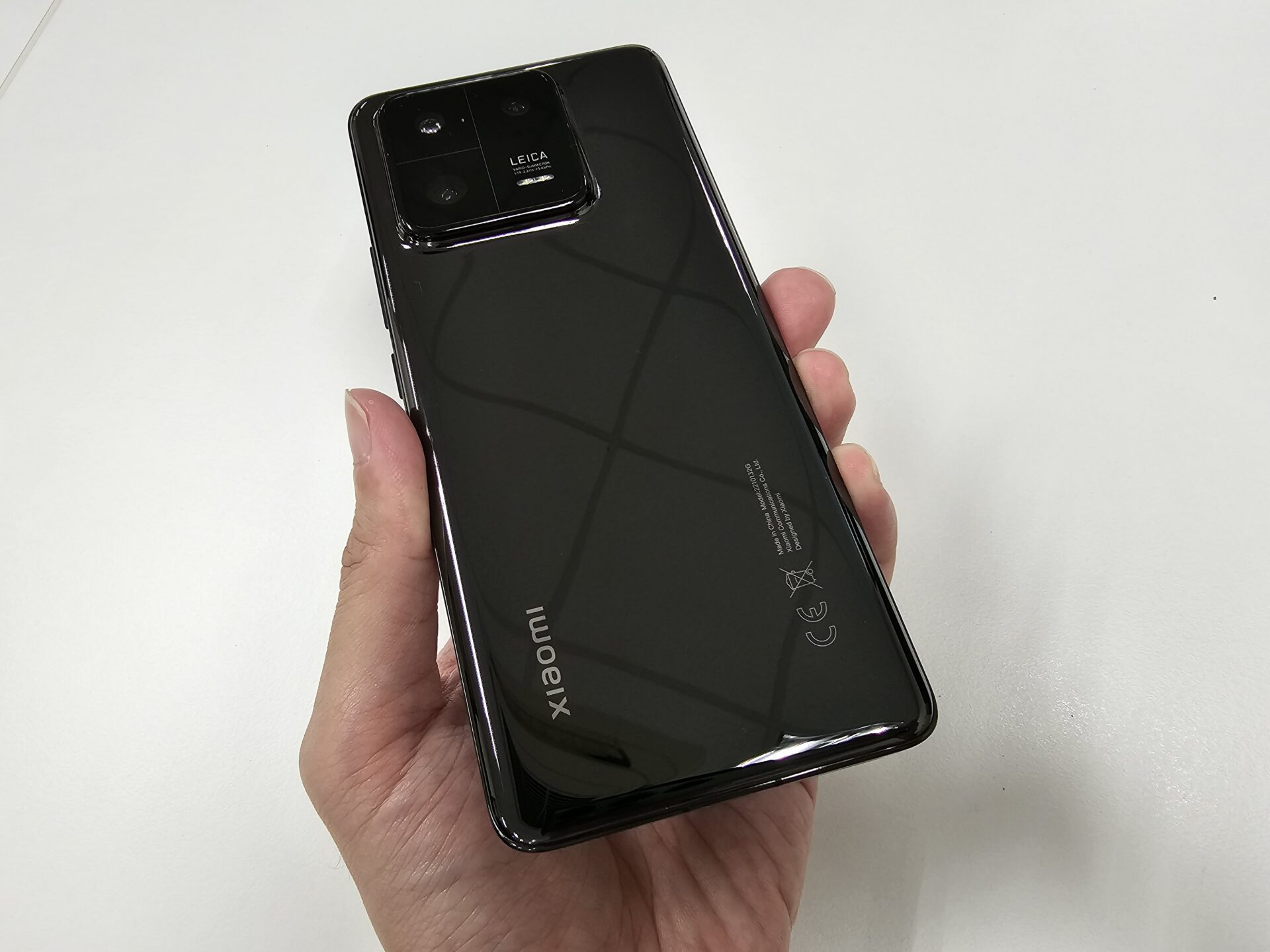
Personally, I find the design very Xiaomi – the rear, especially, looks like every one of its recent devices.
I have no issue with the curved edges. Many makers now opt for blocky designs that cut into my palms and fingers. In comparison, the Xiaomi 13 Pro is very comfortable to hold, especially for my pinky finger holding the phone up.
At the same time, I am not a fan of the gloss. The piano black-like rear finish of our review device is a true fingerprint magnet, worse in the absence of glitter or blast treatment.
I am just glad Xiaomi continued to throw in a free transparent TPU case, so I do not have to live the hassle of wiping down the device all the time.
Screen
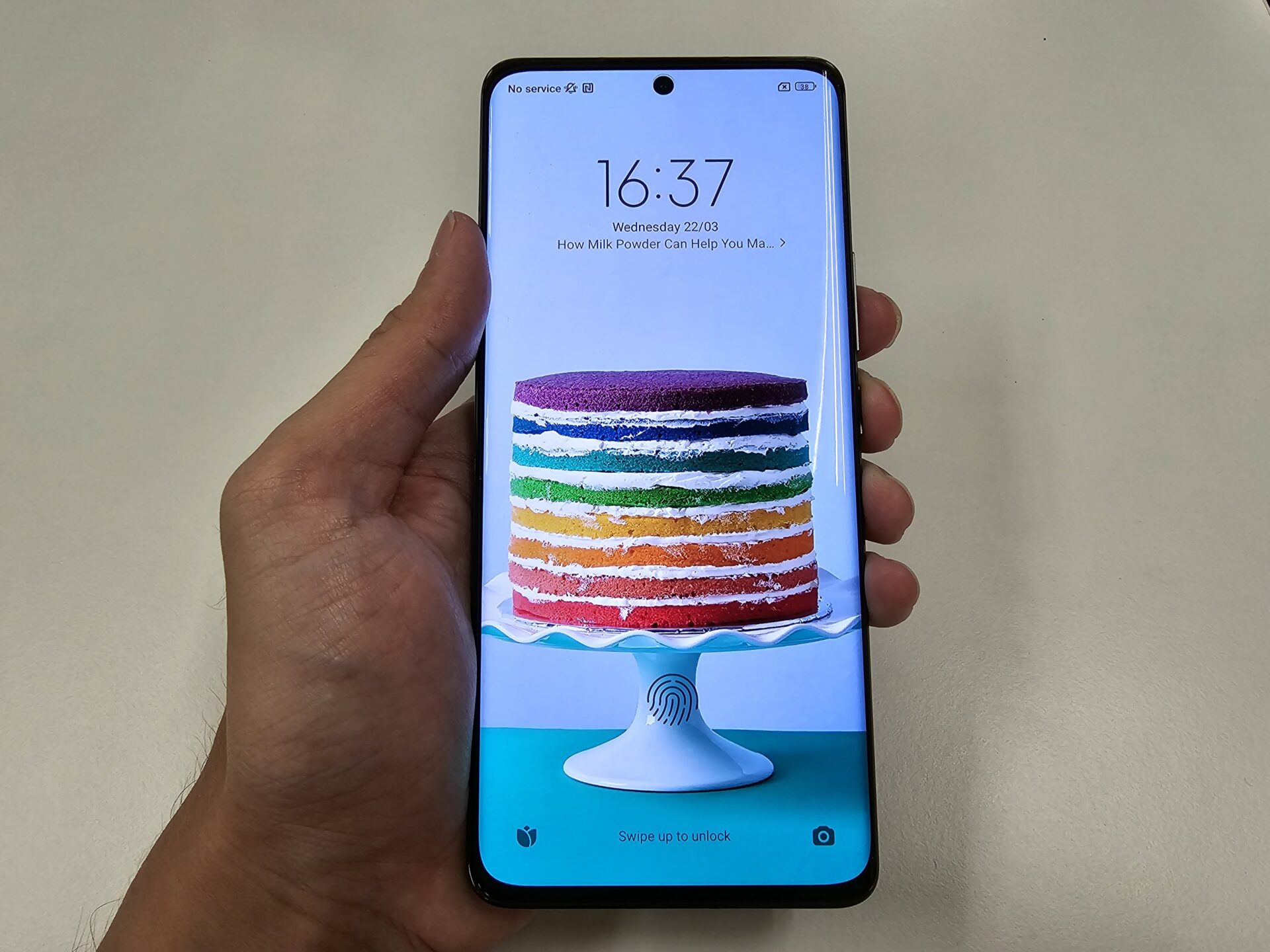
The display here is a 6.73-inch AMOLED unit, of 1,400 x 3,200 (Quad HD) resolution that makes it a 20:9 display. It supports fast 120Hz refresh rates, has Dolby Vision and HDR10+ support, and Corning Gorilla Glass Victus protection.
I have no complaints about the display. Colours are pleasant and vibrant without being artificial. I did not detect ghosting nor debilitating levels of blue shift when viewed off-centre.
The device truly lives up to its adaptive refresh rate moniker. The display dropped to 1Hz when idling at home screen, and rapidly scaled up and down with swipes and actions. I witnessed an entire range of refresh rates – 1, 16, 31, 45, 60, 78, 85, 102, 120…
While it does show that the display takes time to step up and down refresh rates, it beats being stuck on one and draining more power.
The display promises 1,900-nits brightness. In our tests, we measured a maximum of 1,078 nits when manually adjusting the brightness slider, and 1,938 nits when the device is left to automatically manage luminosity on a bright day. Sunlight legibility is thus above average, though the display is a little reflective so it does detract from the experience a little.
Performance
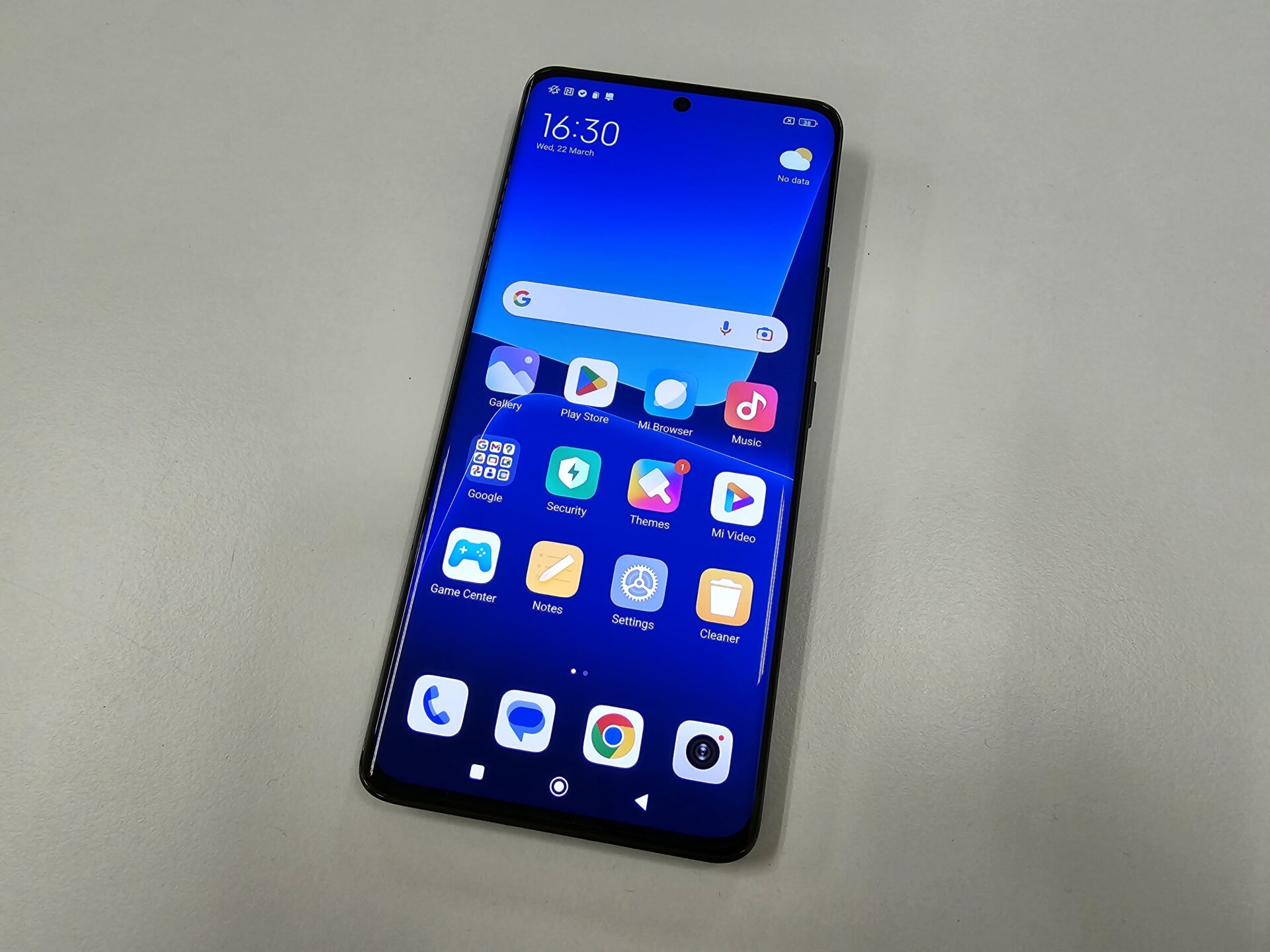
For performance, the Xiaomi 13 Pro uses Qualcomm’s latest and greatest Snapdragon 8 Gen 2. This cup is made on the TSMC 4nm process, which likely solved many of the power draw issues faced by Qualcomm’s Gen 1 predecessor.
Processing units adopt an octa-core arrangement featuring one performance 3.2 GHz Cortex-X3 core, two standard-plus 2.8 GHz Cortex-A715 cores paired with two standard 2.8GHz Cortex-A710 cores, and two efficient 3.2 GHz Cortex-A510 cores. An Adreno 740 unit provides graphical raw power.
I used PCMark 10 for Android’s Work 3.0 Professional benchmark to simulate day-to-day performance workloads like browsing the Web, editing photos and videos, and writing and manipulating data. The score averaged 14,350.
To test its graphical prowess, I fired up Asphalt 9: Legends. Cutscenes and gameplay were smooth, unfortunately there are plenty of jaggies, which suggests the anti-aliasing is not running at full force.
3DMark for Android (Wild Life Extreme), which tests the device’s handling of commonly-used game rendering engines, threw up a score of about 3,000. Framerates ranged from 14 to 22 fps given the demands of the test.
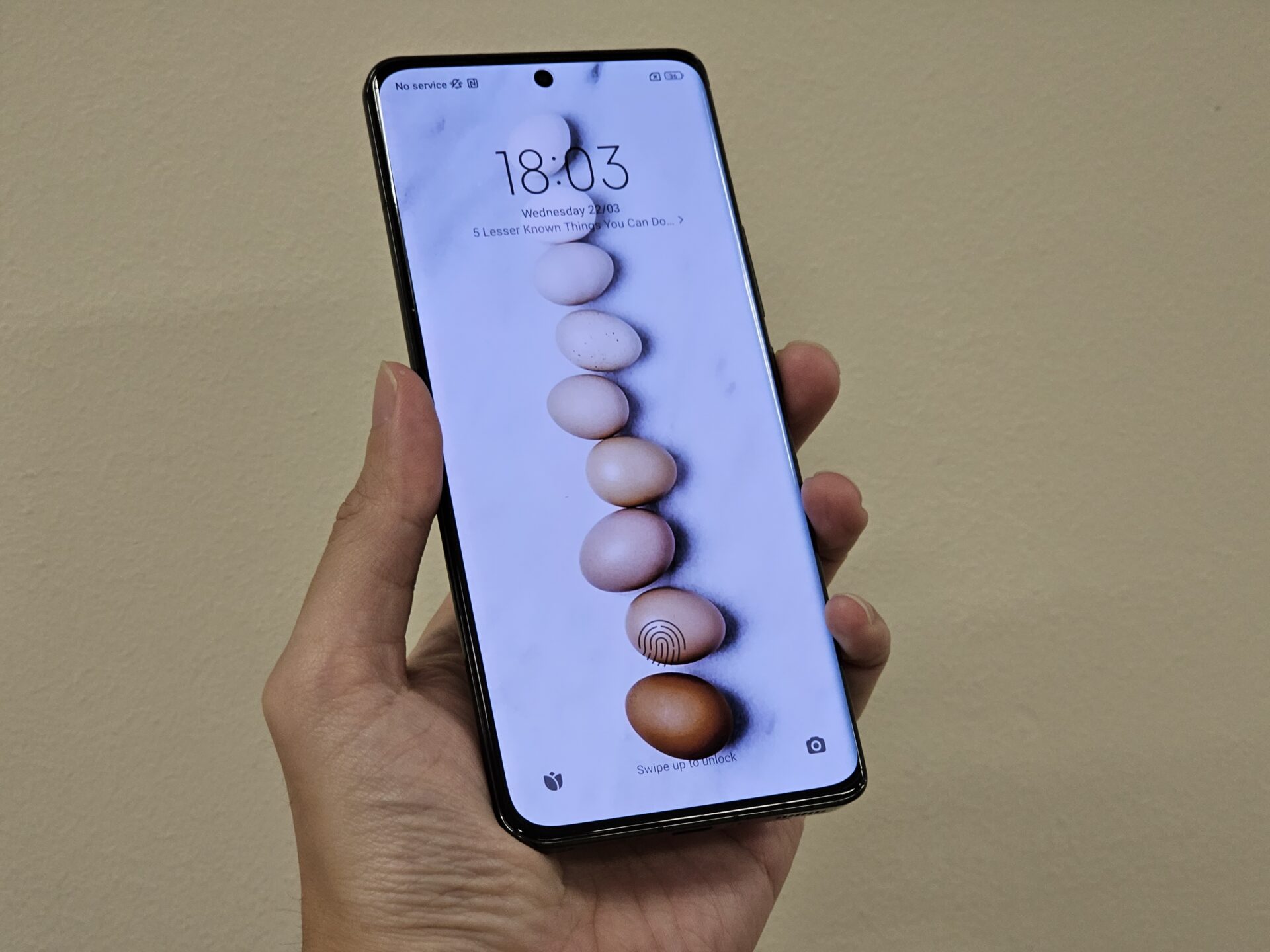
The fingerprint sensor is an optical unit under the display. I find it accurate, at the right spot, and among the fastest I have used in registration and unlocking.
There is no 3.5mm headphone jack on offer, nor microSD storage expansion (though the device can hold two nano SIM cards). The Xiaomi 13 Pro is IP68 dust and water-resistance certified.
There are two speakers – one on bottom right of device, and the other purposed out of the handset speakerphone on the top of the device. Clarity is acceptable and the timbre is bright, if not the loudest.
Feel free to check out the UL Benchmarks site to make your own comparisons of the various scores.
Battery
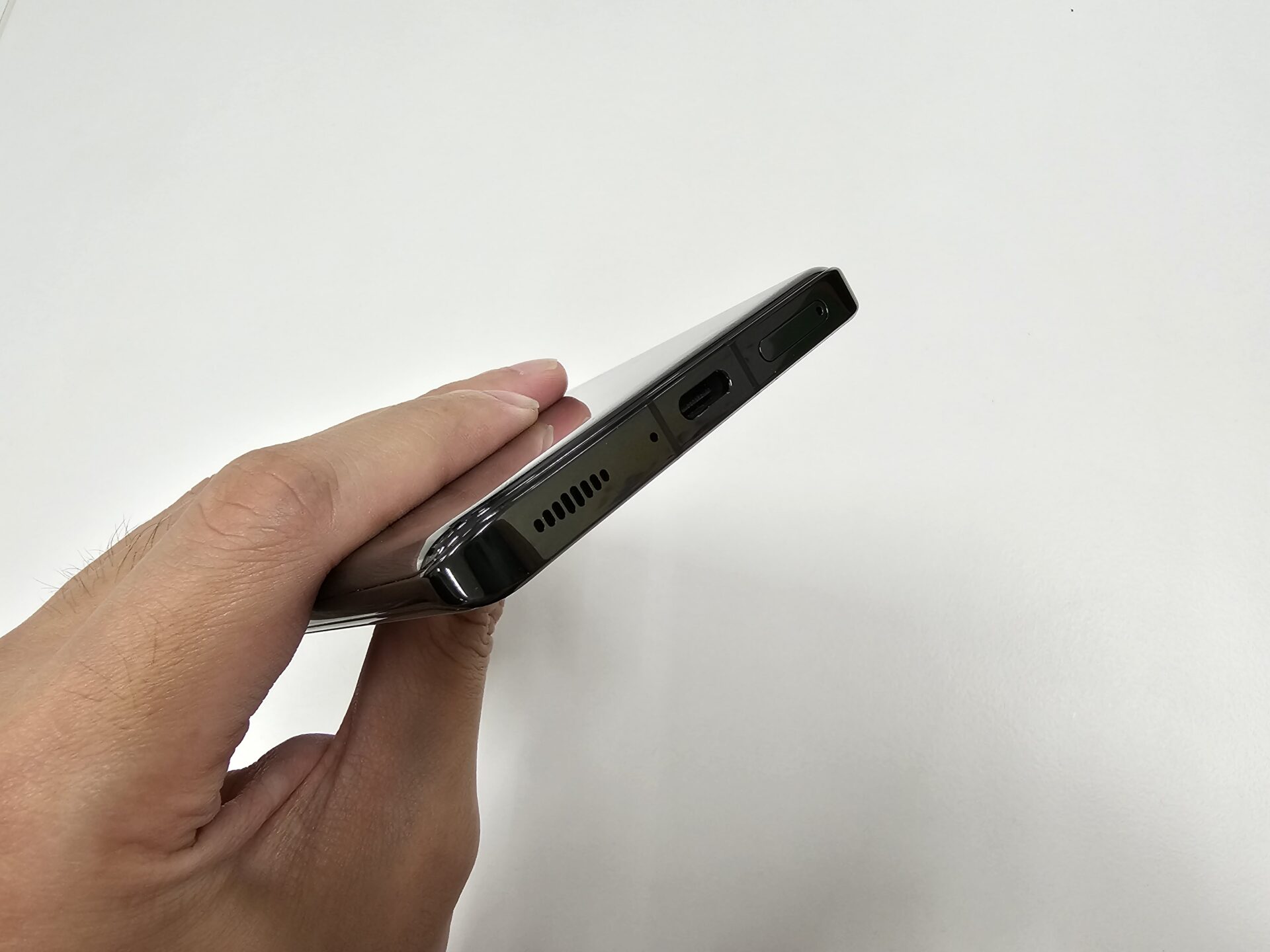
Battery life from the 4,820mAh cell is decent. I calibrated the screen to 200 nits brightness, and ran the PCMark 10 for Android’s Work 3.0 Battery Life test with Wi-Fi running. With the screen on adaptive refresh, the device lasted 12 hours 55 minutes over three runs of the test.
For comparison, Samsung Galaxy S23 Ultra averages 13.5 hours, and Google Pixel 7 Pro 11.5 hours.
Charging is typically a Chinese phone maker’s strong suit. The Xiaomi 13 Pro charges at 120 watts, when paired with a charger compatible with its HyperCharge tech and a 6-amp rated cable. Both are included in-box, which is excellent.
Unfortunately, this does mean the stratospheric charge speeds can hardly be achieved with power banks, or a charger you borrow from a friend.
The Xiaomi 13 Pro also supports 50W wireless charging when paired with Xiaomi’s own chargers, and 10W reverse wired and wireless charging, if enabled from the Control Center.
Cameras
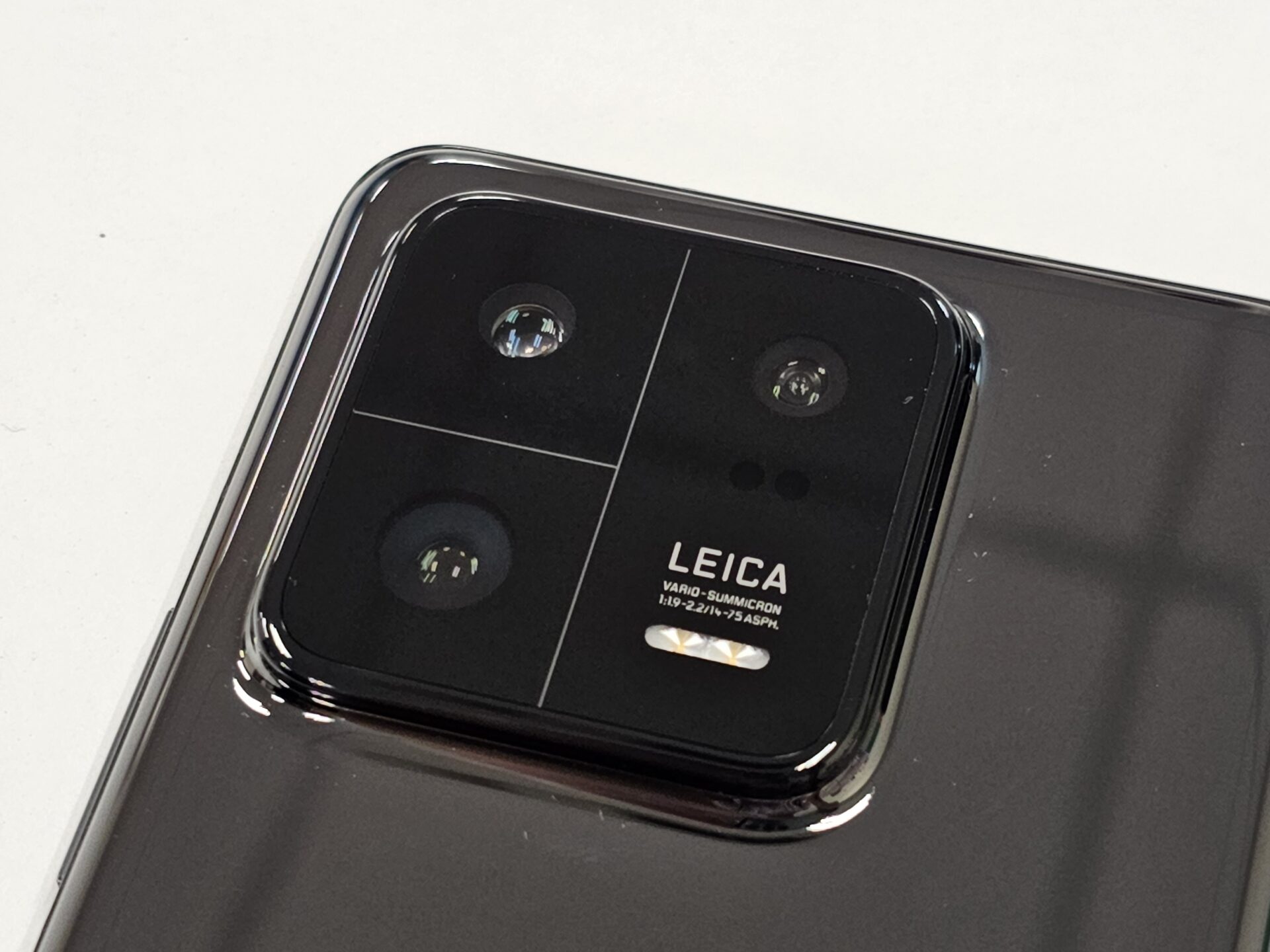
The Xiaomi 13 Pro camera suite is ultra-flagship grade, featuring a three-camera system co-engineered with Leica. The wide shooter has a 1-inch type sensor, typically found on prosumer cameras like the Sony RX100 series.
These cameras offer mirrorless-like image quality without the bulk, and can go for about S$1,800. For a 1-inch type sensor to fit into a smartphone is a wonderful thing, and something I hope becomes more common with time.
The telephoto sensor is also able to handle macros as close as 10cm, in addition to regular zoom duty. The only loss? It lacks a 10x telephoto option, which remains very much a Samsung exclusive.
Wide: 50.3 MP, f/1.9, 23mm, 1.0″-type, 1.6µm, Dual Pixel phase detect autofocus, laser autofocus, OIS
Telephoto: 50 MP, f/2.0, 75mm, phase detect autofocus (focal range from 10cm to infinite), 3.2x optical zoom
Ultrawide: 50 MP, f/2.2, 14mm, 115˚ field of view, autofocus
The Xiaomi 13 Pro’s large sensors have a natural advantage in receiving and processing detail. Its snaps just have that added realism and dimension that makes spatial detail look that much more pronounced despite being viewed on a two-dimensional plane.
The colour science co-engineered with Leica is the proverbial icing on the cake. On Leica Vibrant mode, the skies, trees and streetscapes are tastefully coloured without being dull or blown out.
The effect is frankly amazing, and makes me see the images captured on other competent shooters like the Samsung Galaxy S23 Ultra in a different light after.
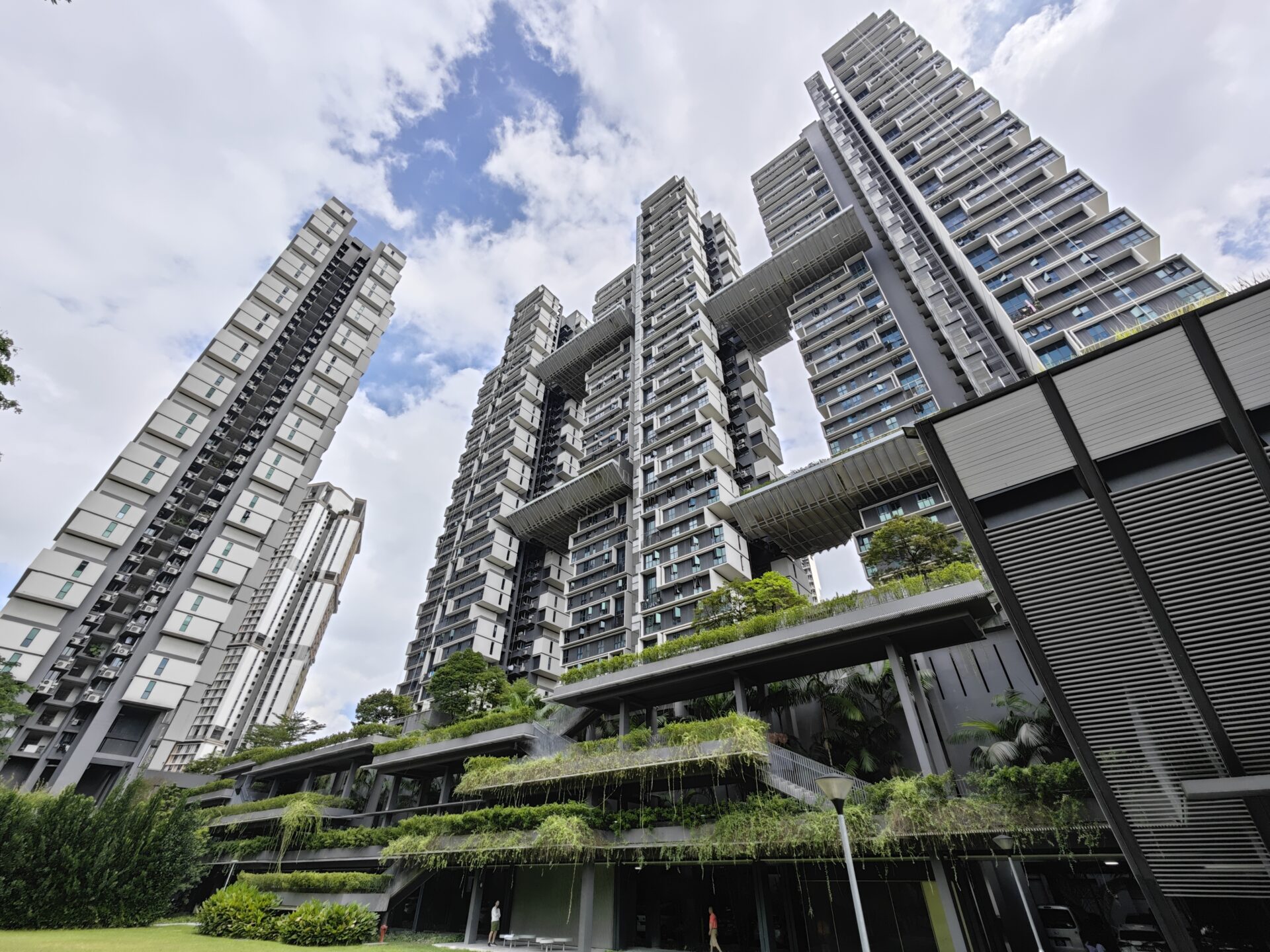
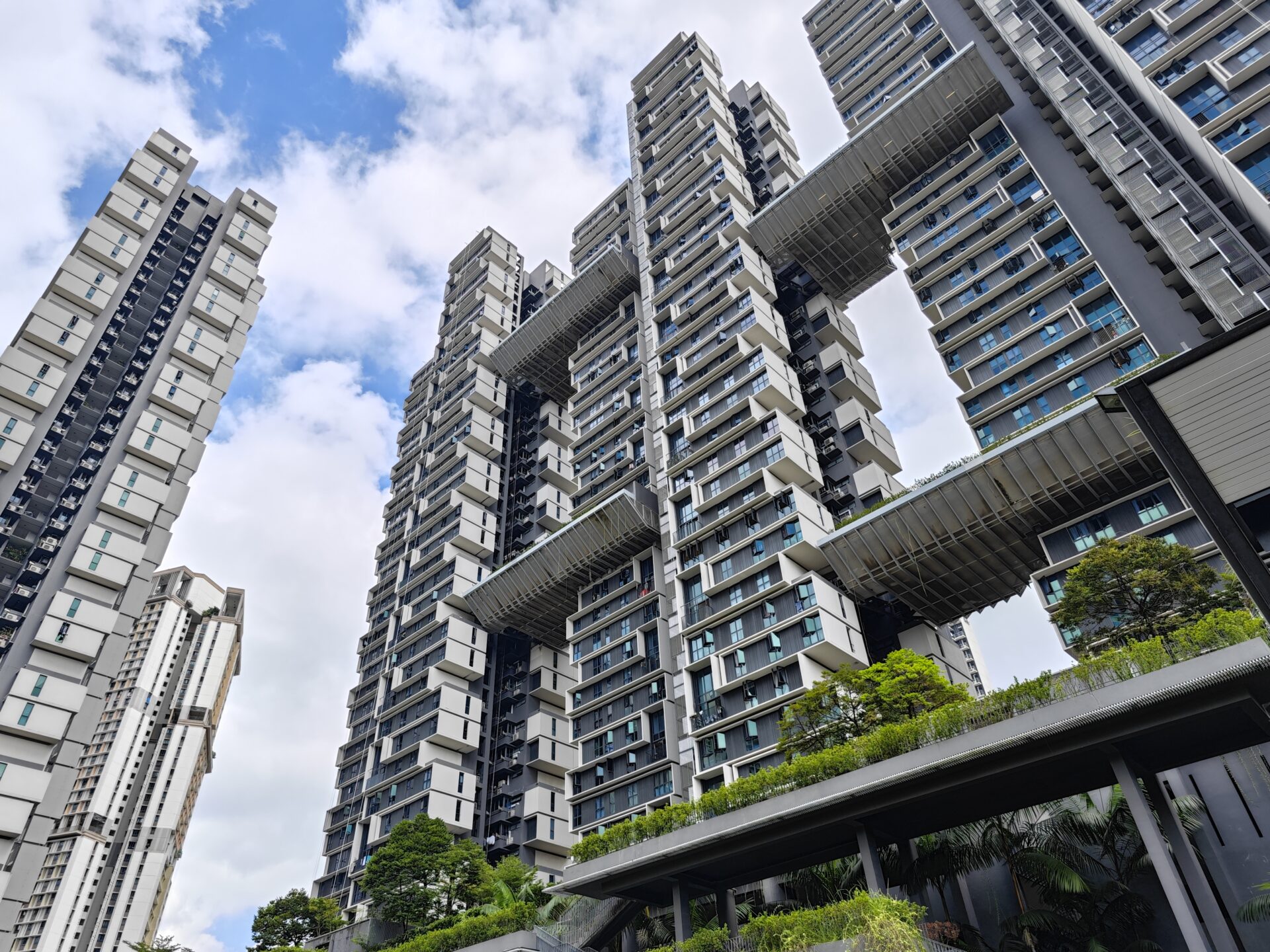
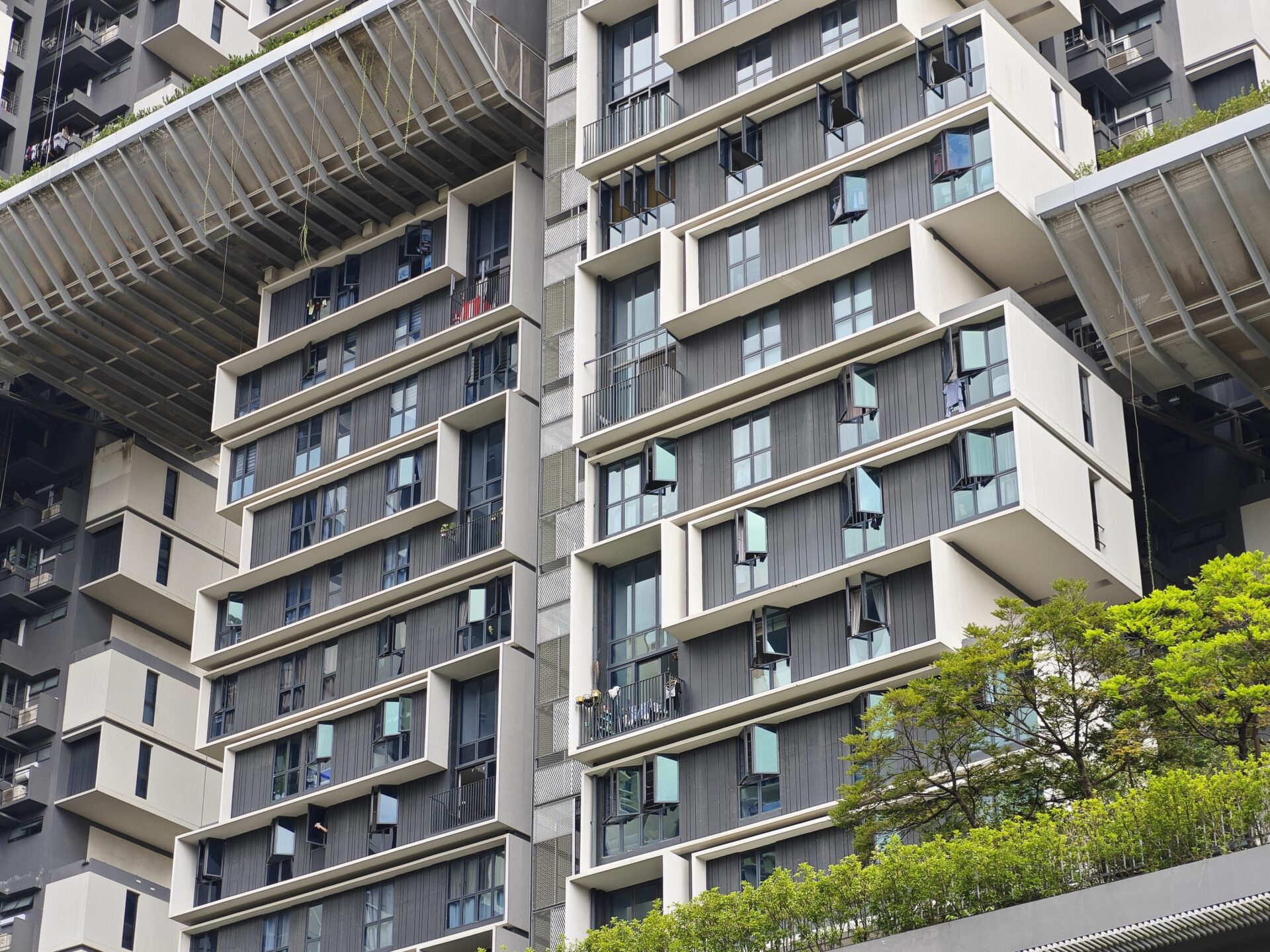
Skyscraper Residences – The ultrawide has very broad field of view, though there is distortion of detail in the edges. Buildings are well-defined and the greens pop. The thick white clouds against the blue sky create a certain 3D-like definition.
The wide shot carries even more detail, and colours even more vibrant. Notice the different mirror angles hitting light in different ways and creating different shades of blue.
On the telephoto, I like how there is little loss of detail in this shot when compared to the wide shooter, despite the sensor not being as large. While there continues to be great depth definition (a common compliment), you can tell the tree canopy is not completely pin sharp.
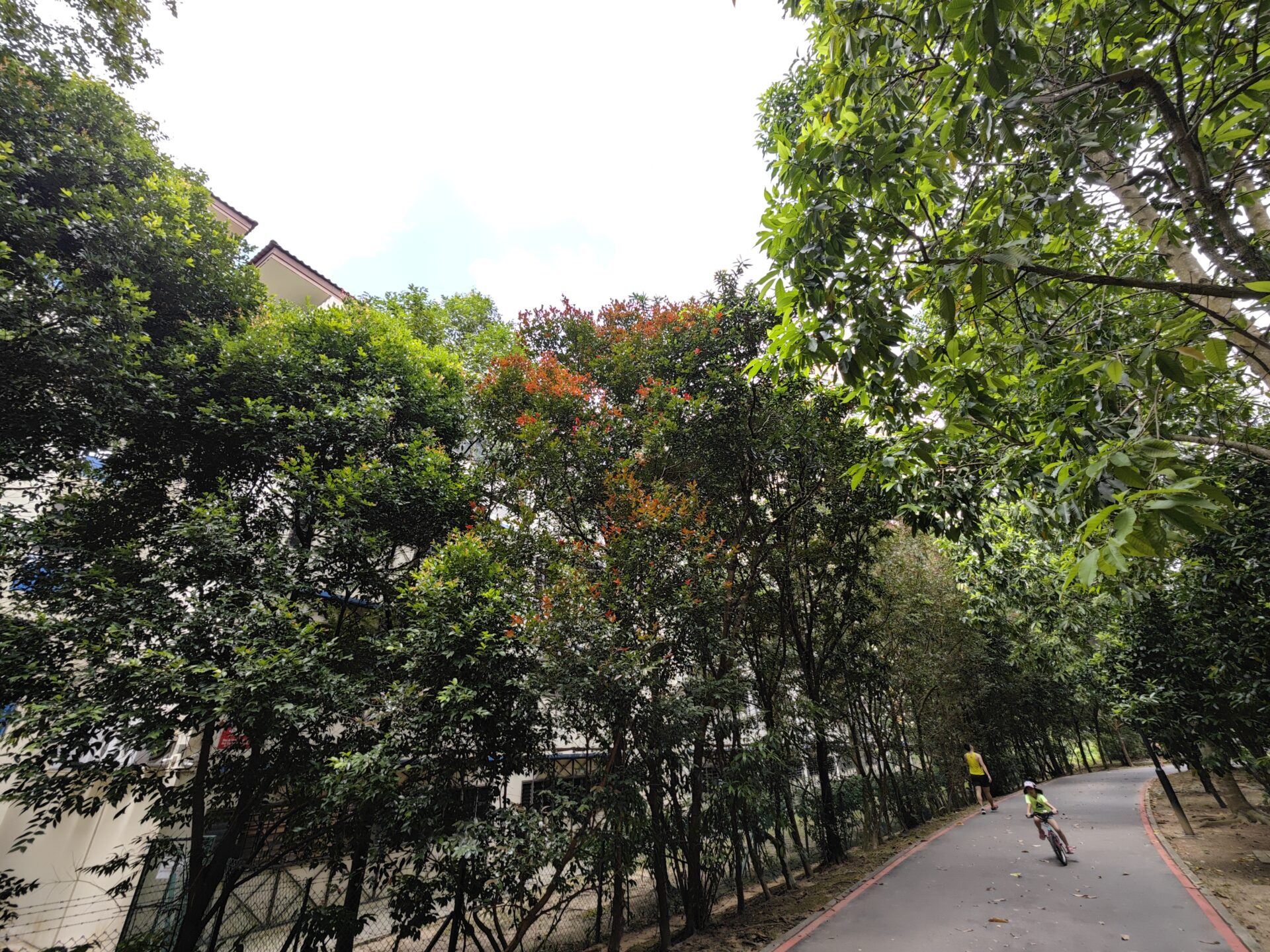
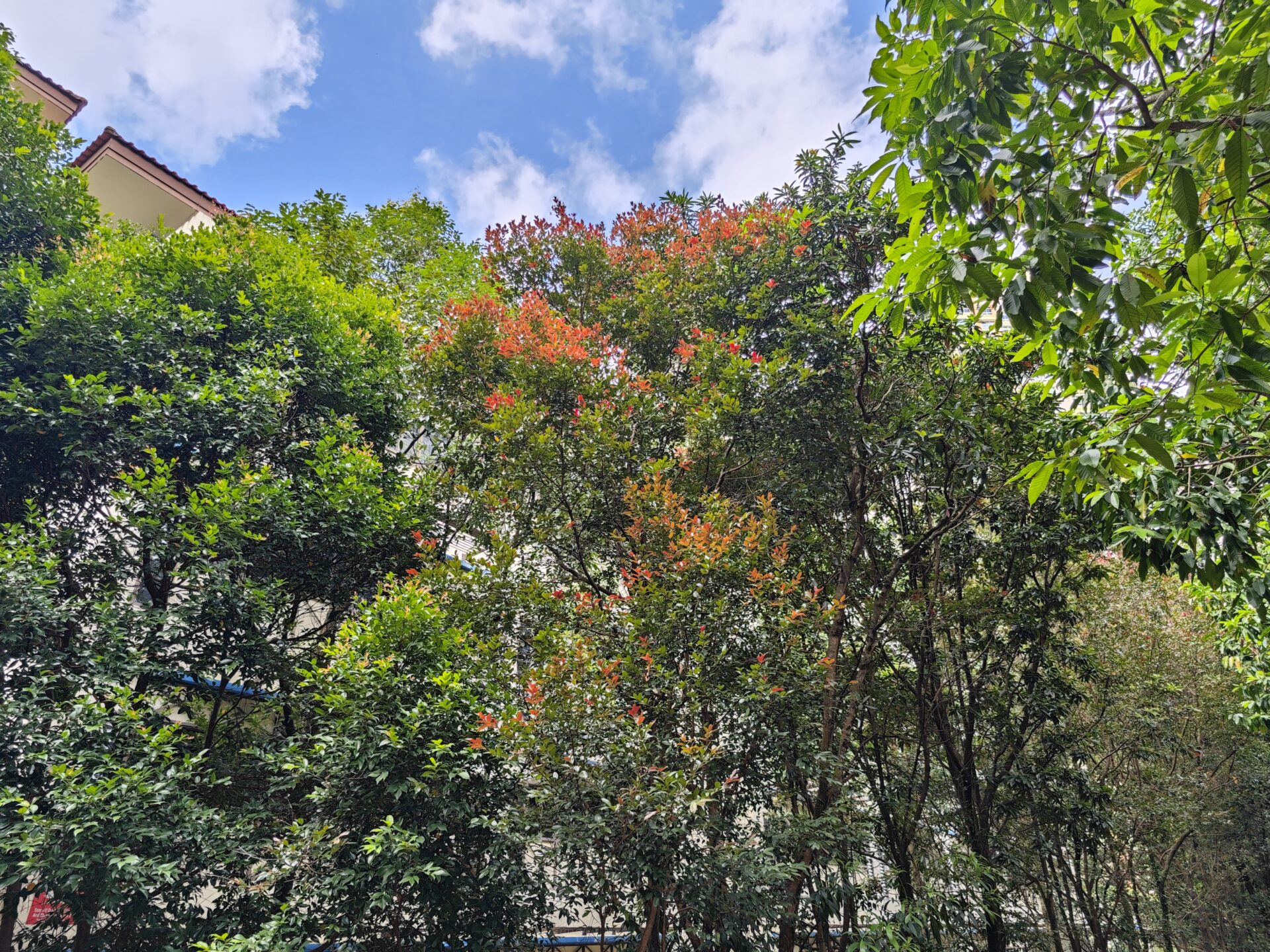
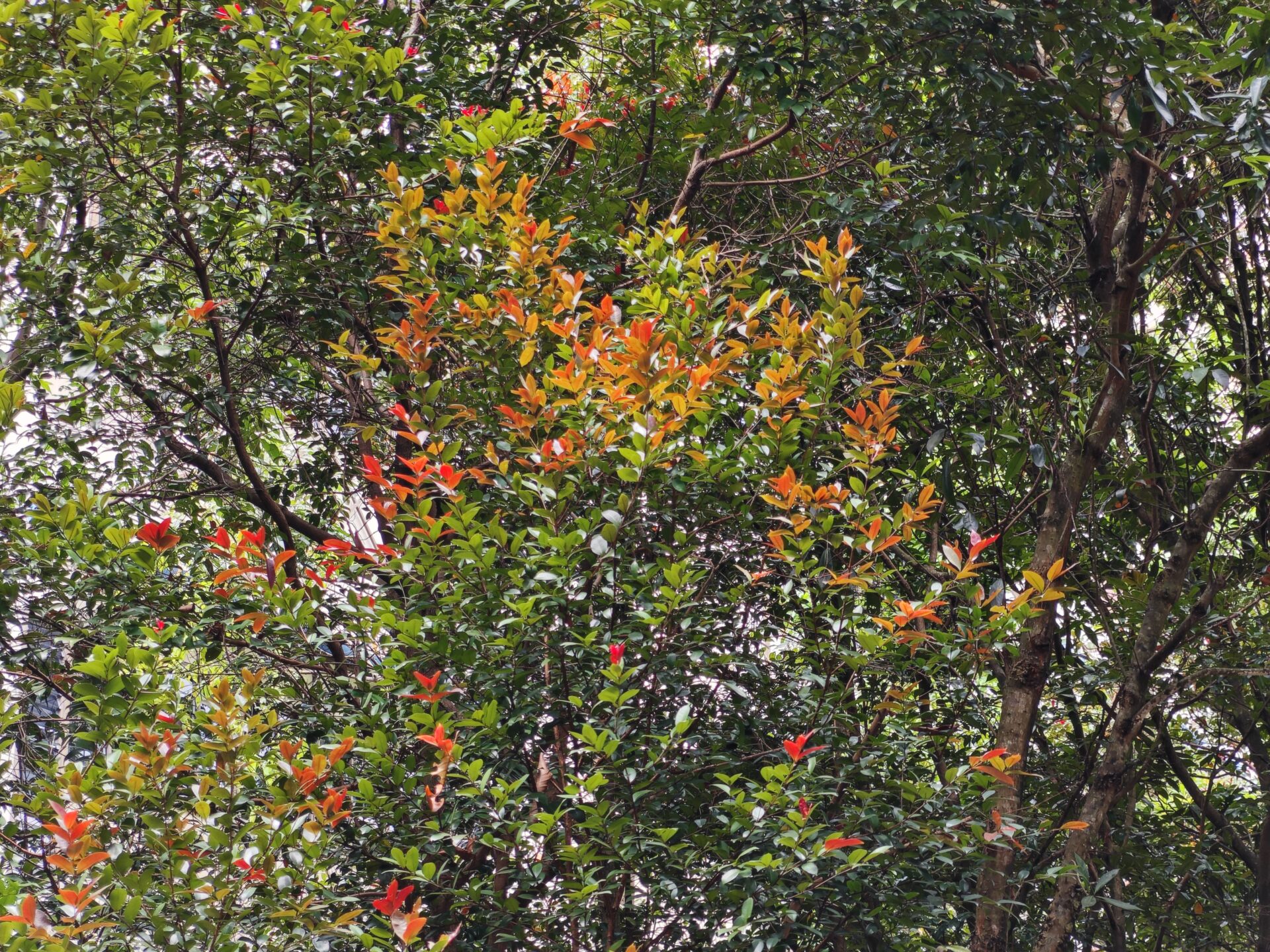
Not Fall Canopy – With the ultrawide, the canopy is a little washed out and sky a little blown out because of the contrasting foreground and background, but the level of detail and lack of purple fringing in such a technical shot is very admirable amongst competitors. The edge distortion can be seen in the little girl on a bicycle.
The standard shooter brings out the technical competency of the imaging set-up. See how well the shot retains both the blue sky and clouds, while keeping the greenery in the foreground well-lit and detailed. You can also see that the definition of the leaves in the shadows are retained when zoomed-in.
The telephoto is also a very competent shot, with very little loss of detail and purple fringing.



Green Pavilion – For the ultrawide camera, I am again blown away by the detail retention in the ultrawide shot. Few smartphones have managed to do this much.
I thought the detail retention amidst the shaded zones in the wide shot is less strong, resulting in an overall darker shot. Nevertheless, I admire how the yellows and greens in the foreground pop, and how 3D they feel.
The telephoto shot got its focus on the shrubbery in the background rather than the (wilting) flowers in the foreground.
Overall, a good shot, but expose the risks of very high apertures that many smartphone camera systems employ to let in maximum light. They are good for bokeh, even when you did not intend for it.




Food – The following four shots are all captured with the wide shooter. The detail and colour on the shots are all very tasteful and I like them, especially zones in focus where the sauces simply glisten. At the same time, they demonstrate unintended bokeh in the corners due to the high aperture.
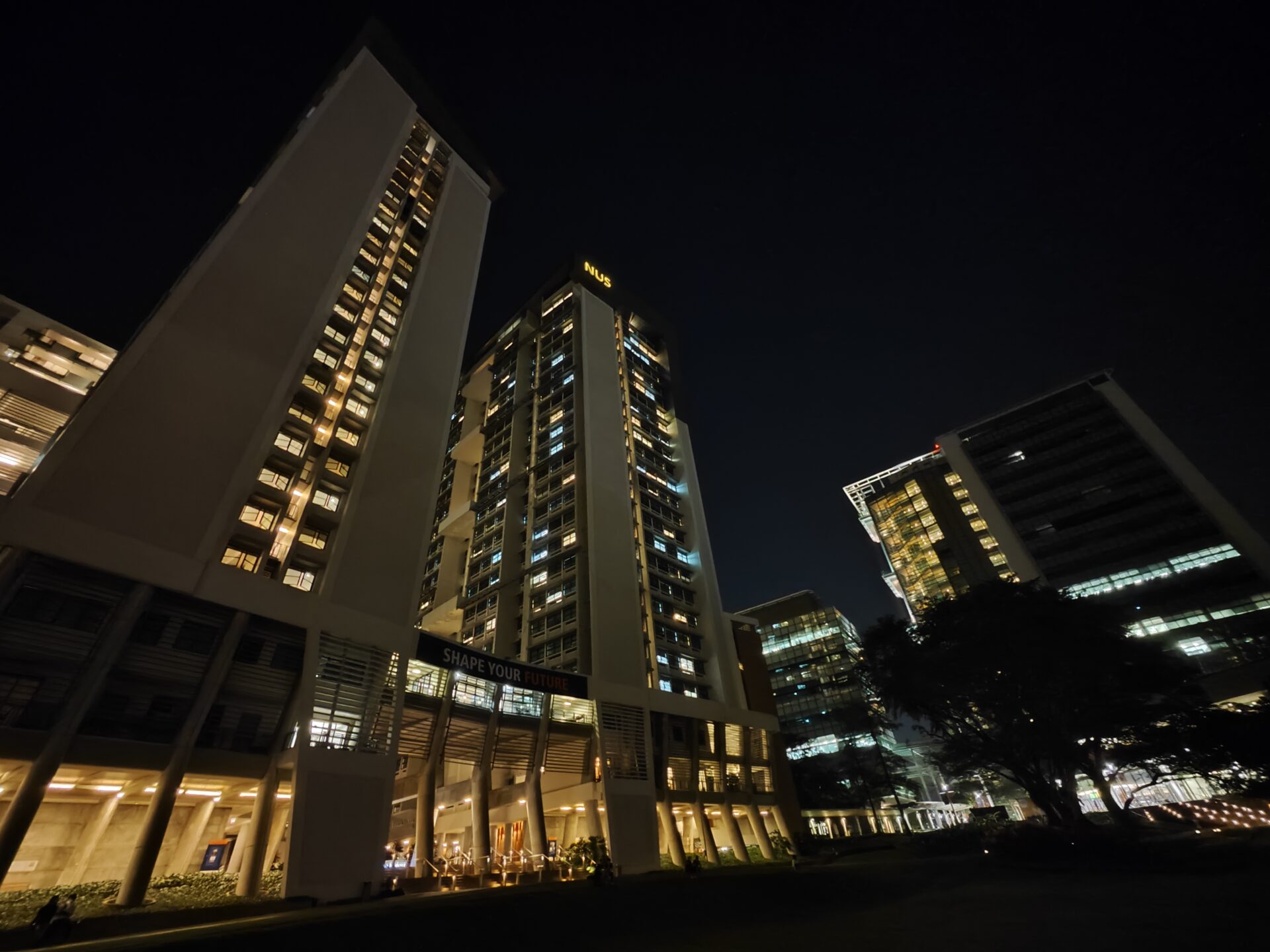
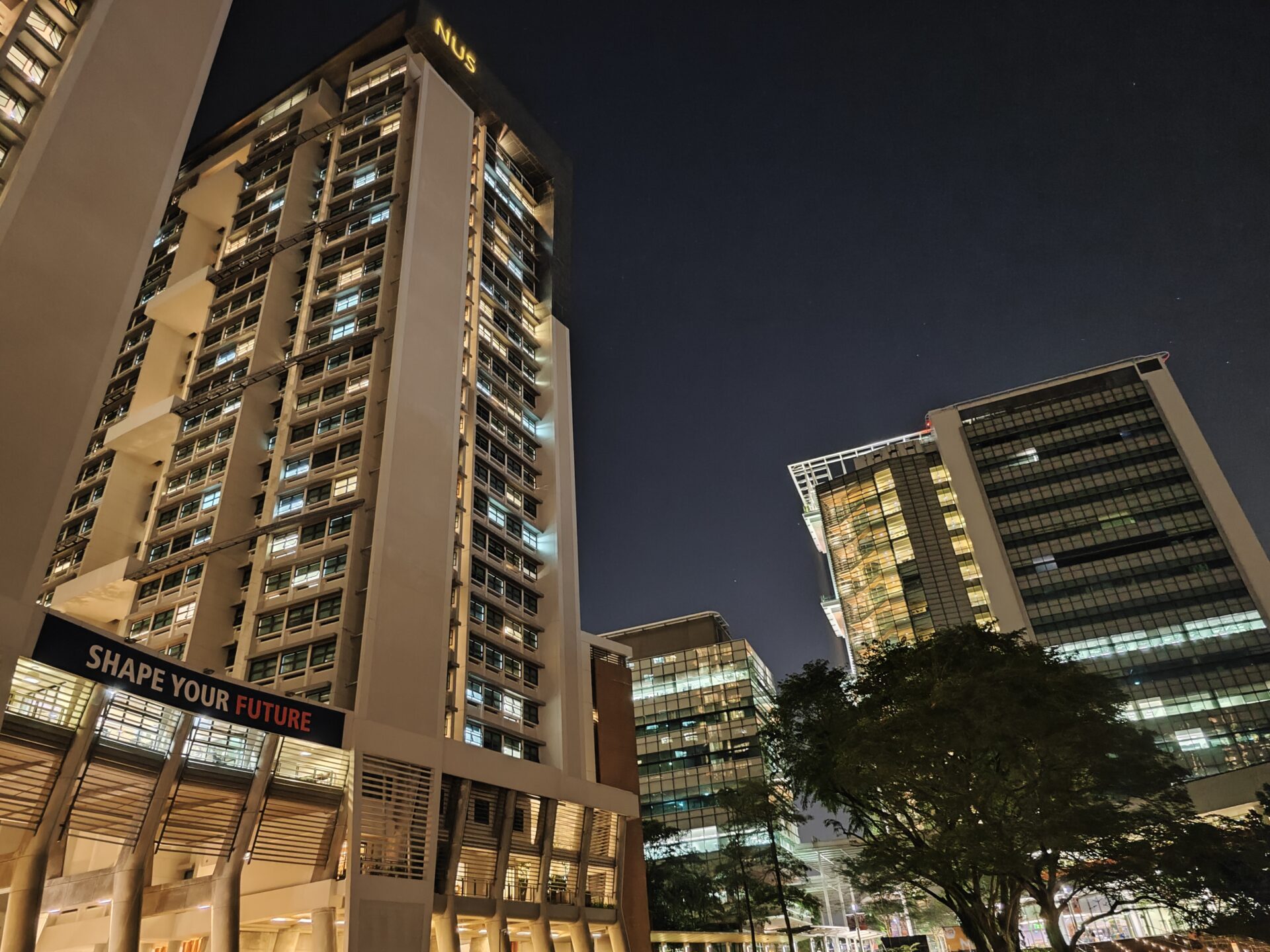
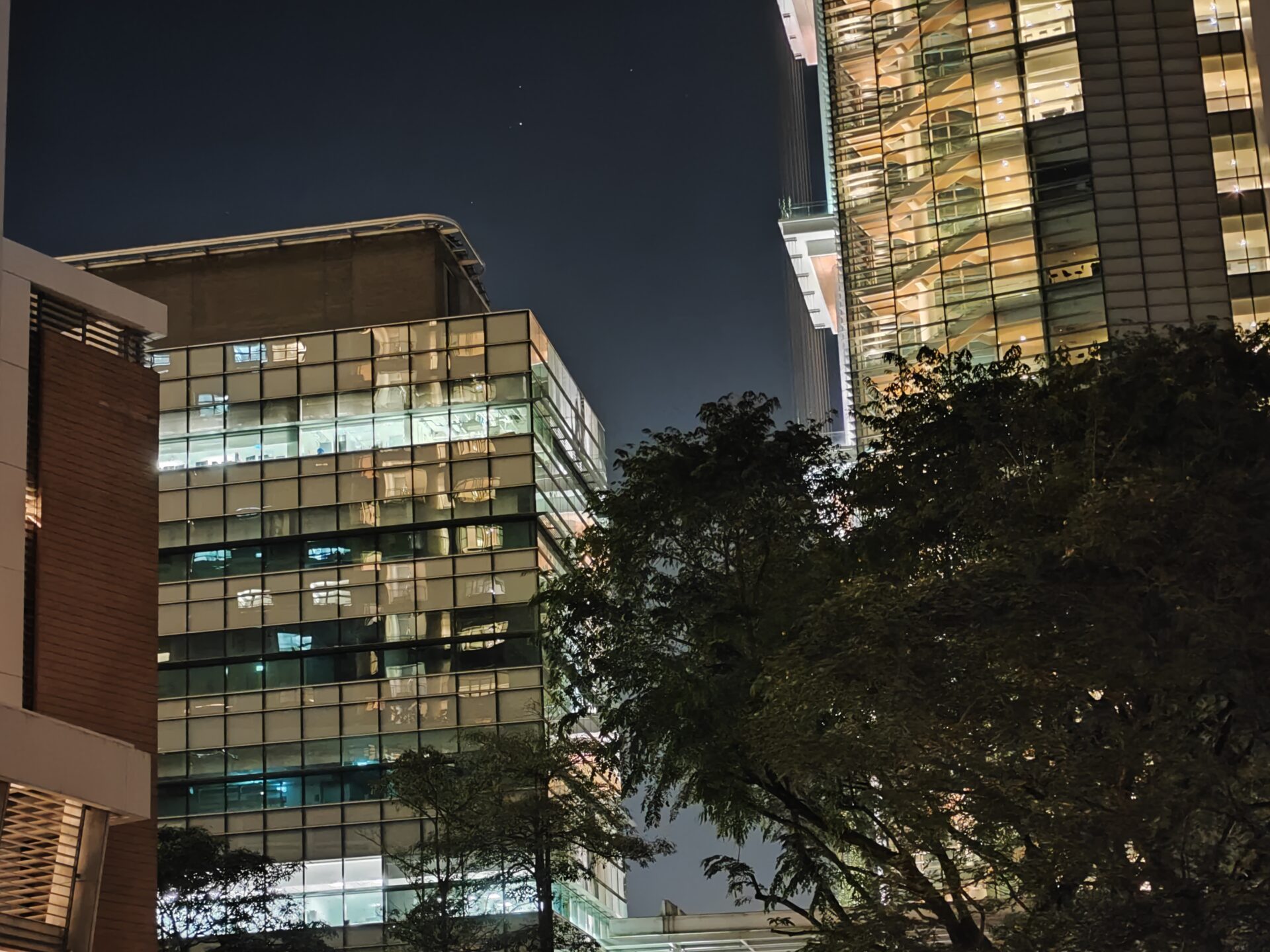
Twilight High Rise – The ultrawide shot is in focus despite the lack of light data for the sensor to work with. There are no miracles where the tree in the shadow is concerned, but detail is decent where light hits without blowing out.
The wide shot has let in much more light than the ultrawide, which makes everything much more pleasant. The tree in the shadow is also much better defined. Plus, is it not amazing we can see the stars in the night sky?!
The telephoto loses little detail, either. I am impressed that the buildings are reflected so clearly on the glass facade of the building on the left.
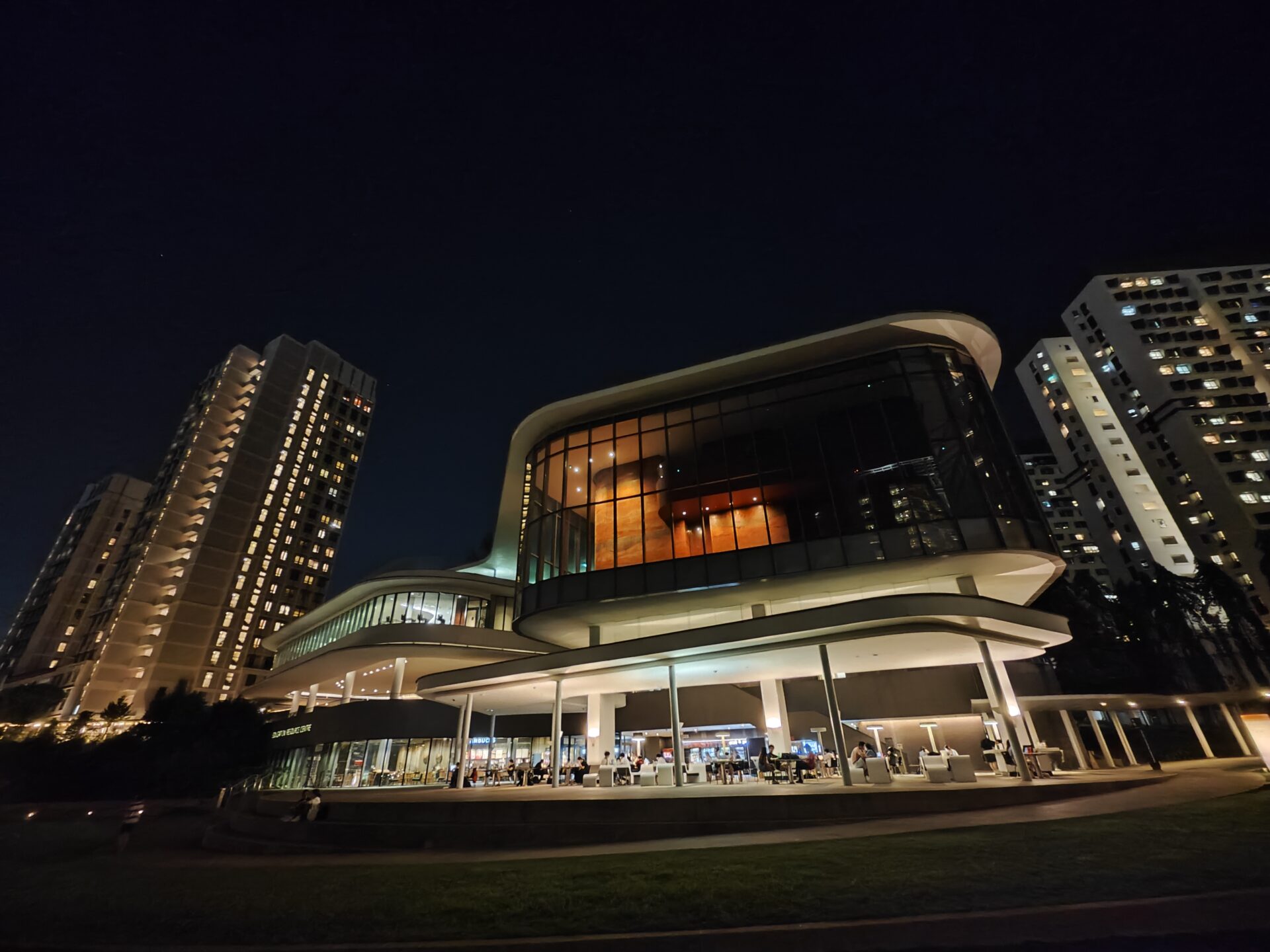
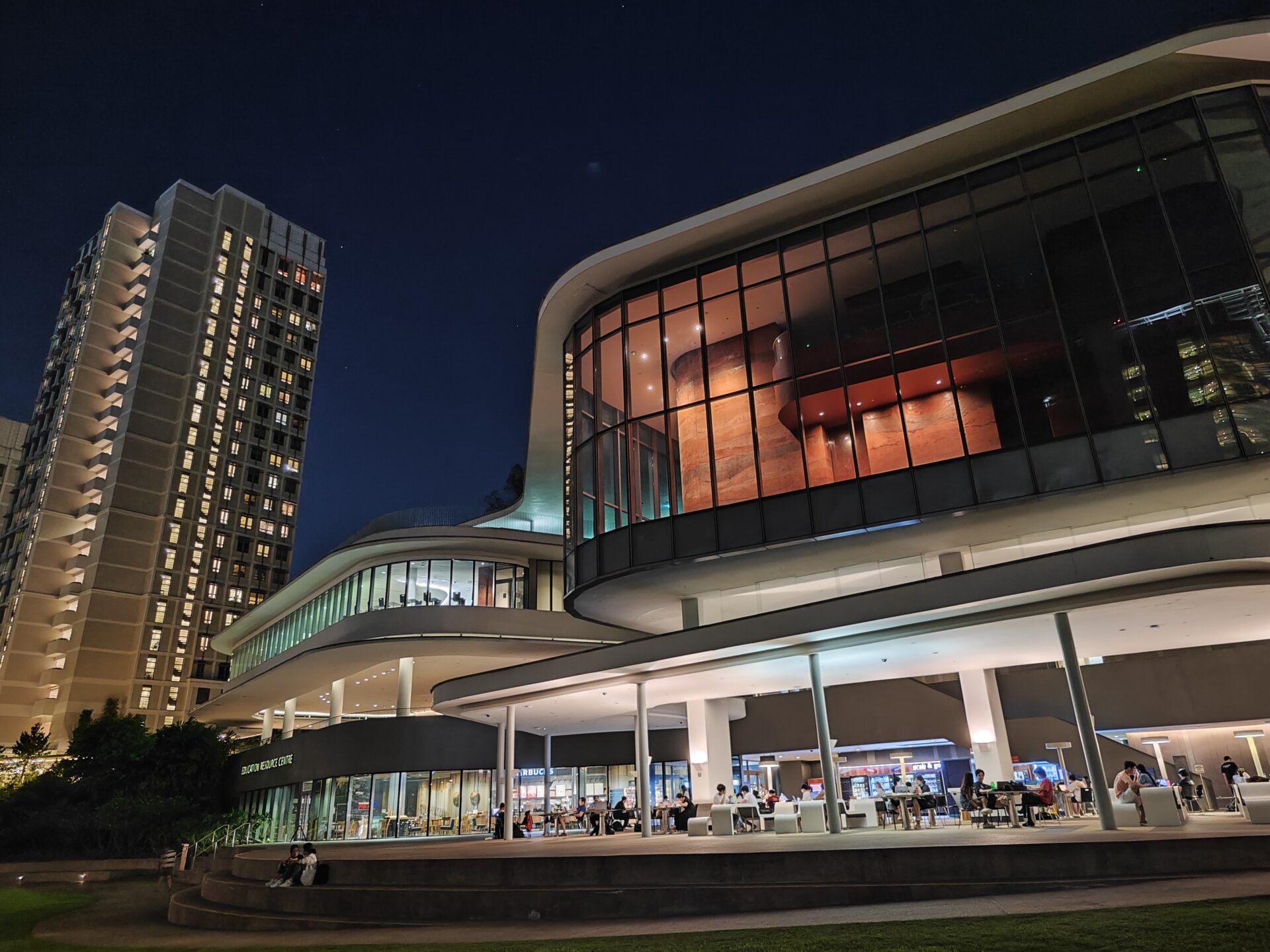
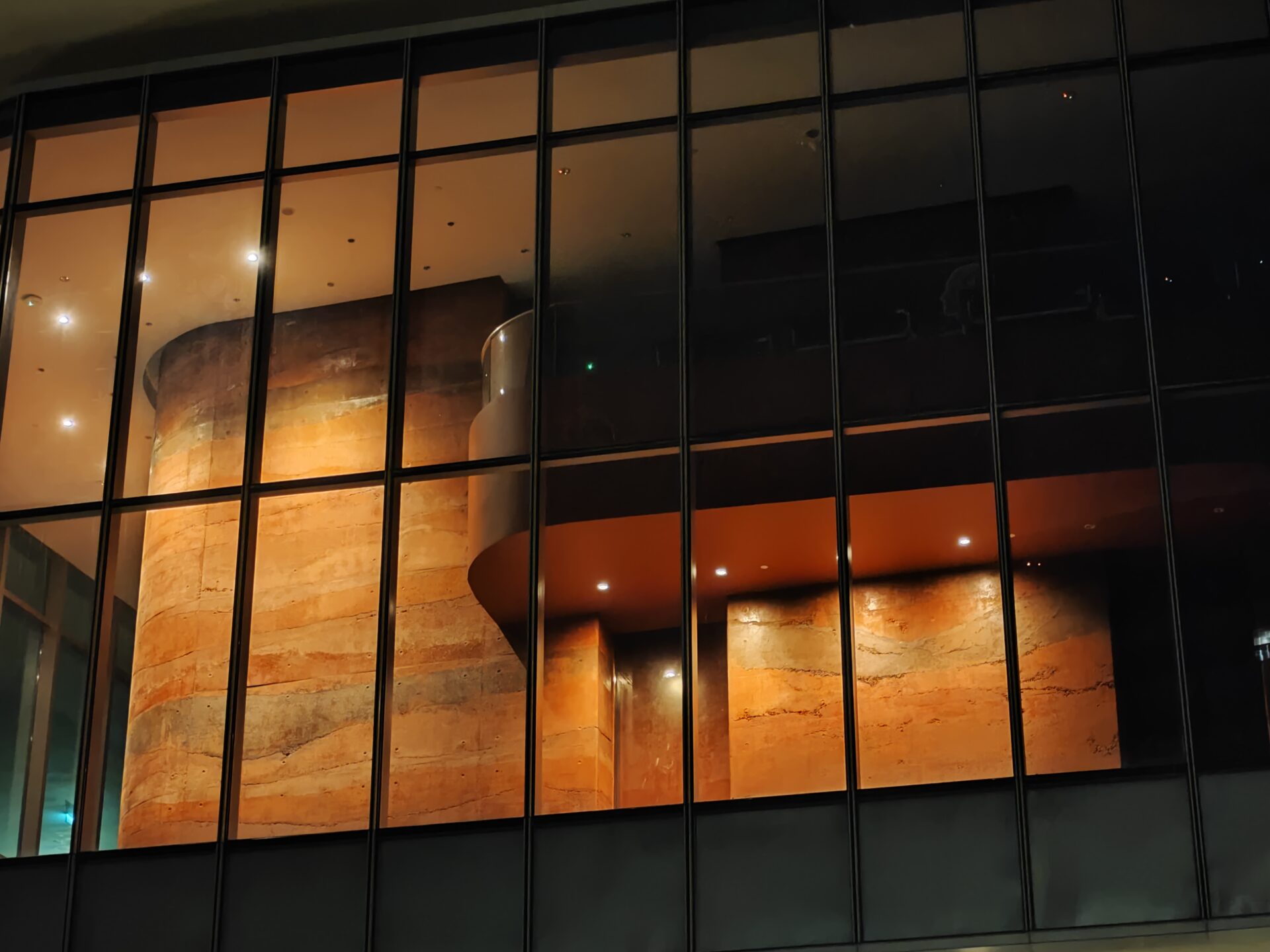
Midnight Mugging – Same comments for the ultrawide as earlier. Dark areas produce little detail, but lit parts look decent.
For the wide shot, the colours are so beautiful and I am so appreciative of how the colouring brings out the depth definition. For the telephoto, it is amazing how colours do not wash out, and I’m impressed by the amount of detail on the wall.
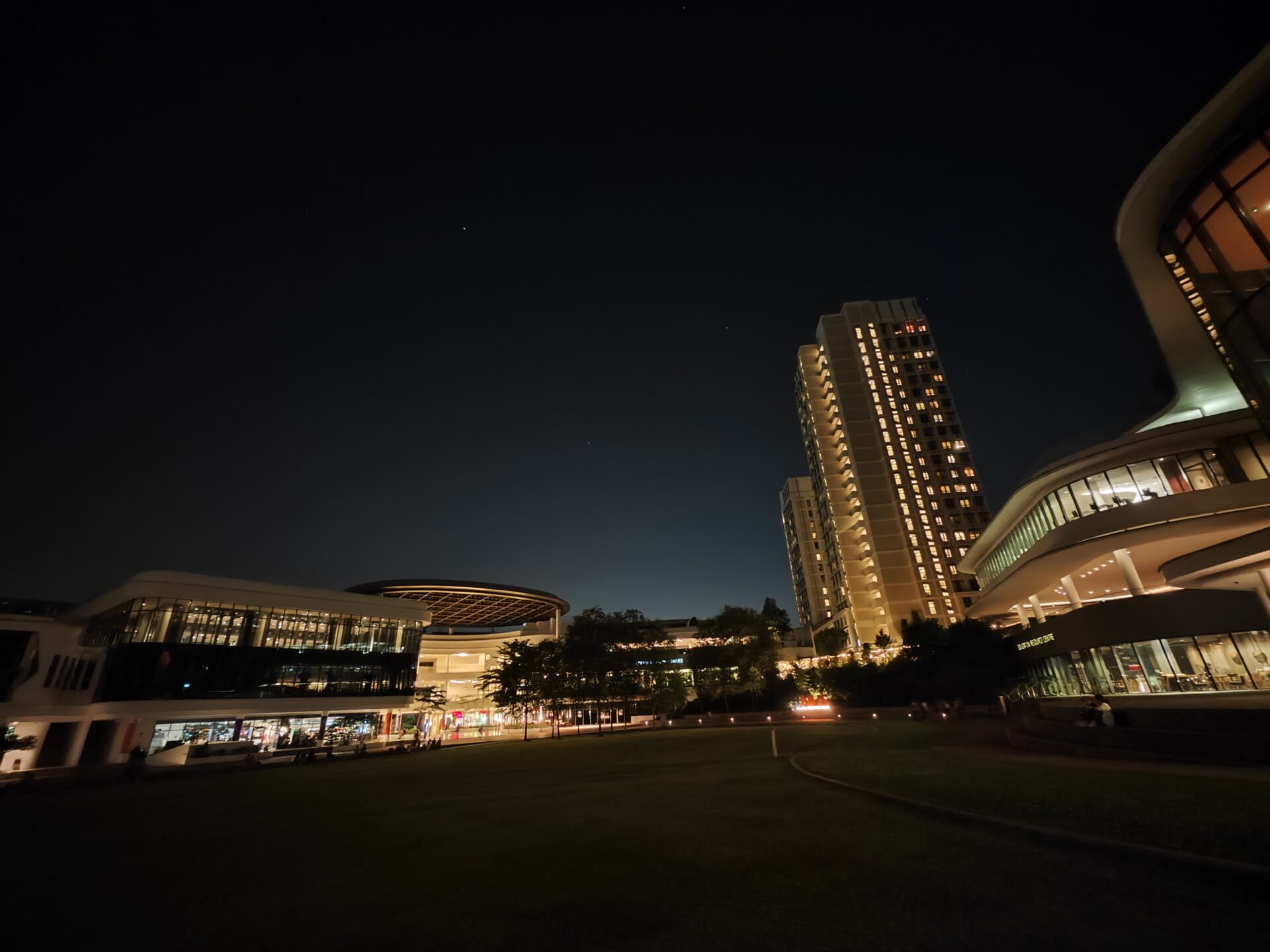
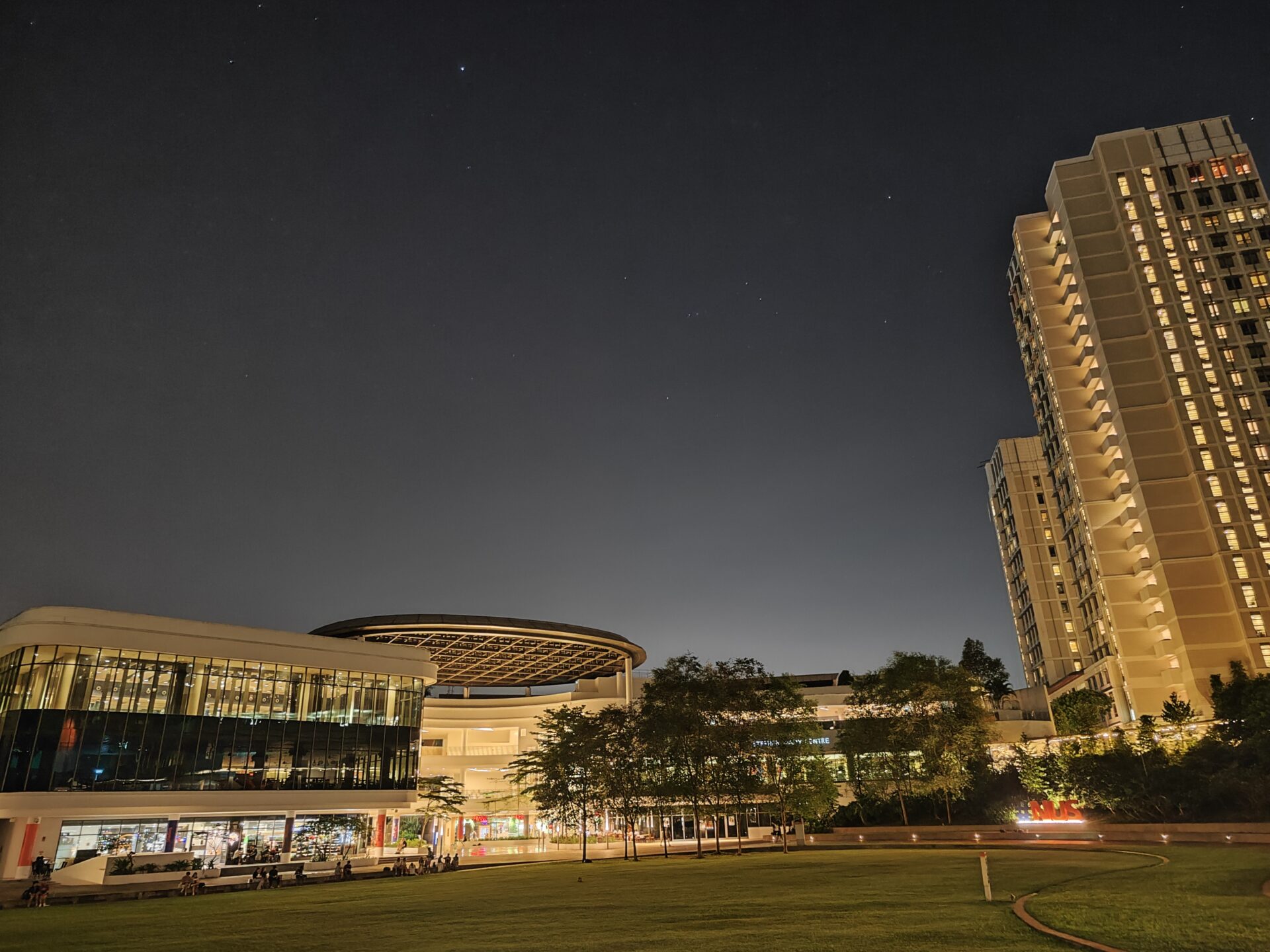
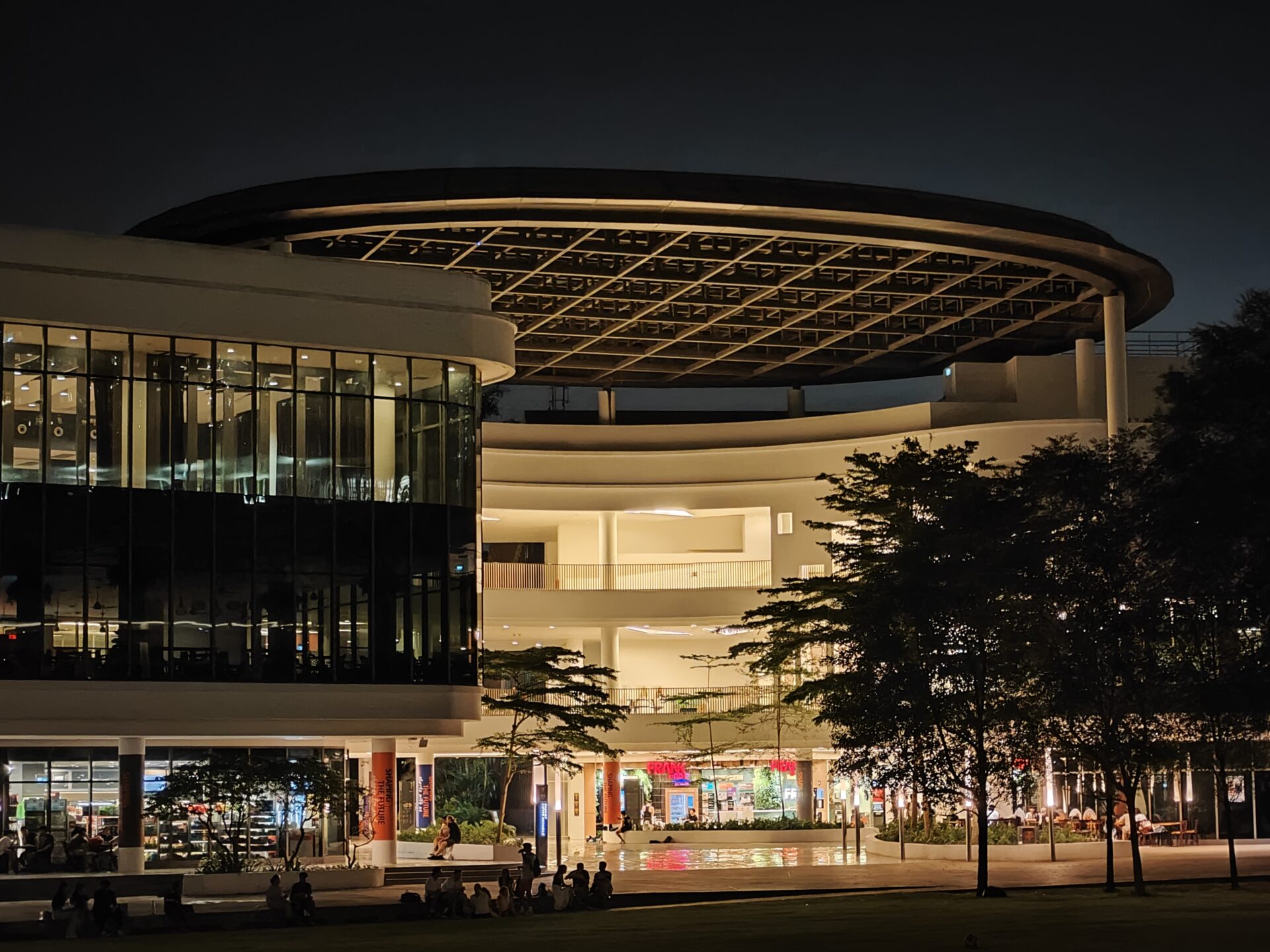
Twilight Green – I am impressed with the ultrawide shot. Here is one of the very few smartphones thus far able to not blow out details on wide angle.
Detail-wise, though, it cannot be compared to the wide shot, which is sharp, well lit with tasteful colours. The telephoto also looks superb, in my view, especially in terms of detail.
Conclusion
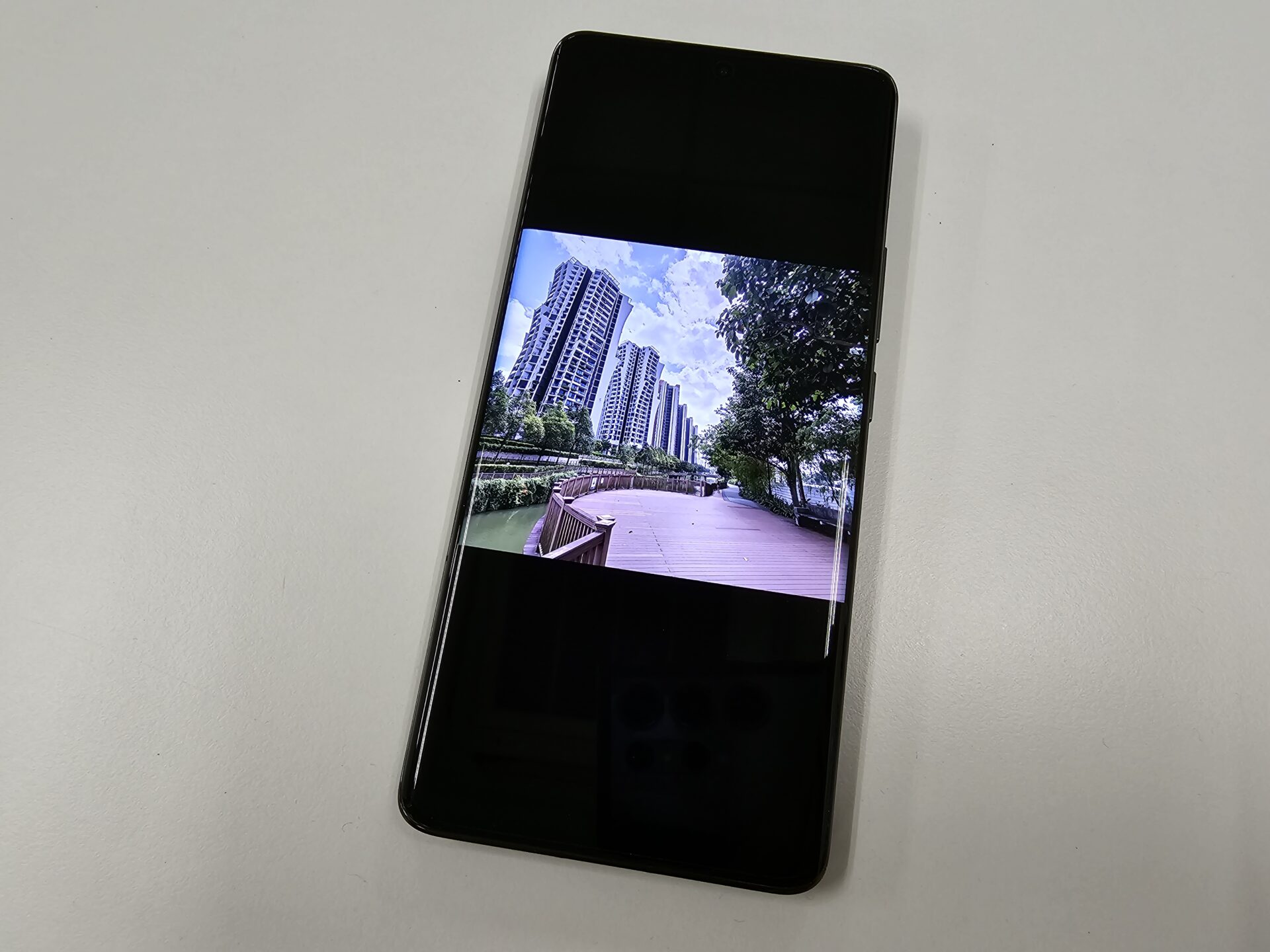
The Xiaomi 13 Pro checks the right boxes for a flagship, and then some. The build quality and display are premium, battery life is decent, a high-speed charger and compatible cable comes with the device, and Xiaomi has done this for long enough that there are no showstoppers in terms of software.
More importantly, the camera system is among the best we have tested, and the fine performance is not limited to the wide shooter with 1-inch type sensor. I am just impressed by the detail retention, and how every shot can enhance depth perception.
The telephoto is clearly of very good quality, and the ultrawide may not be as good as the other two, but both are better than the competition. Yes, the device is prone to fingerprints, but nothing a case cannot save.
You too need be careful with focus on the expansive main shooter. But, you have a telephoto capable of macro. A little more difficult to frame up close, yes, but it is there. Imagine what the Xiaomi 13 Pro can achieve with a 10x telephoto in its mix?
Considering the camera system punches above the weight of most costly rivals (I saw listings hawking an unopened Xiaomi Pro 13 set for S$1,398), I’d wholeheartedly recommend the this new mobile photography powerhouse.
